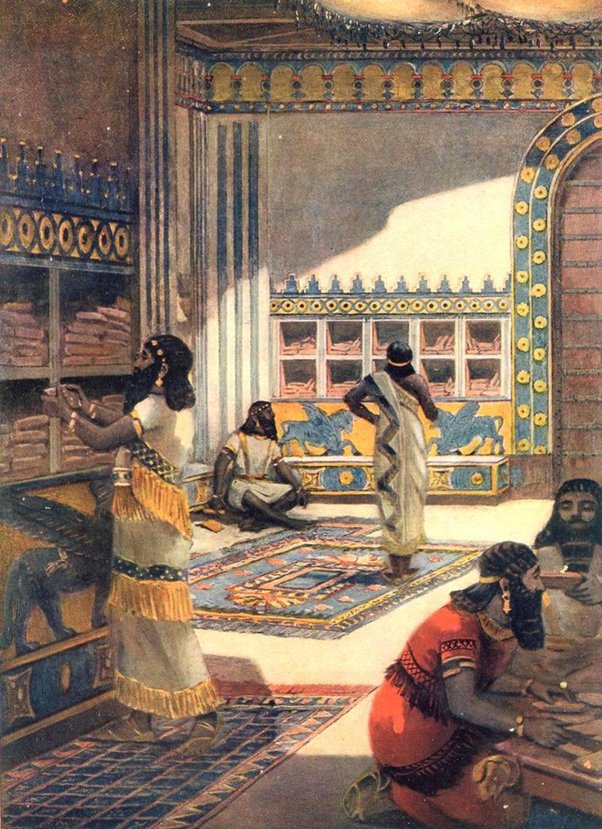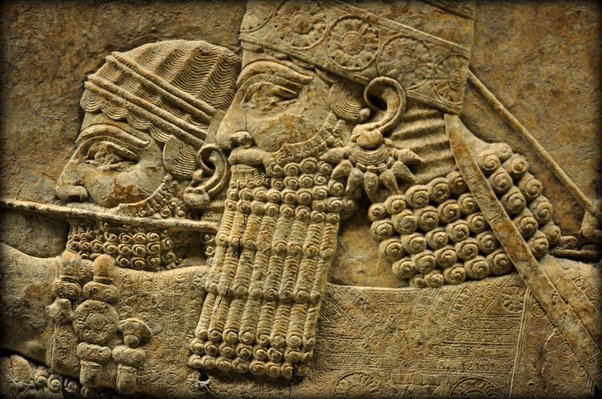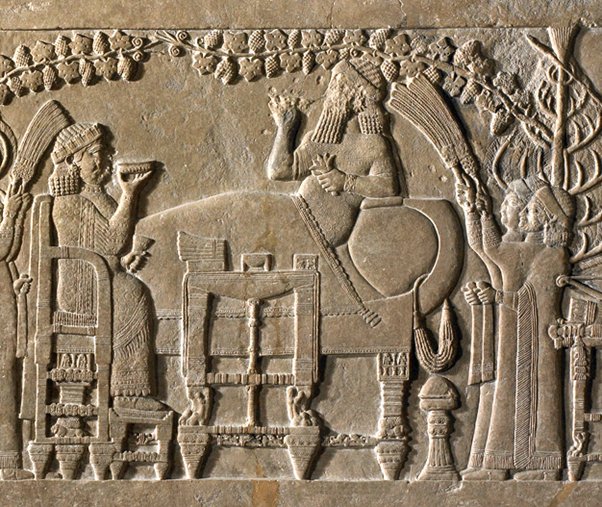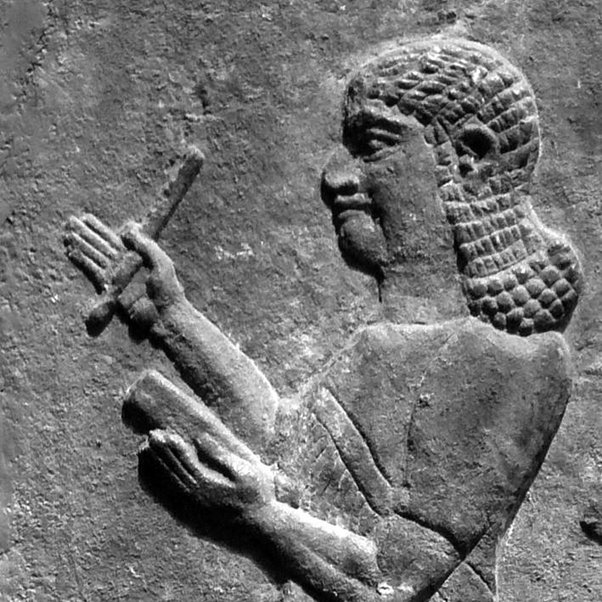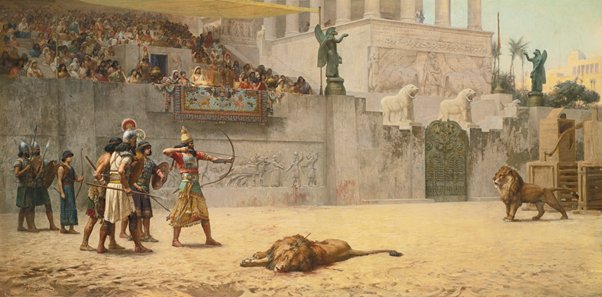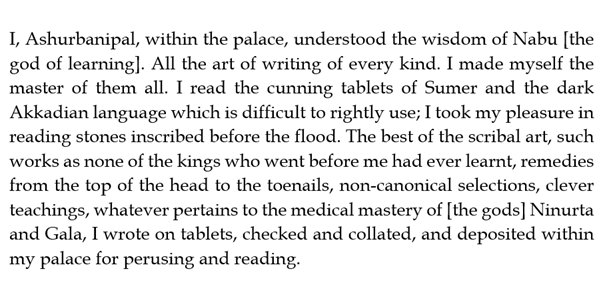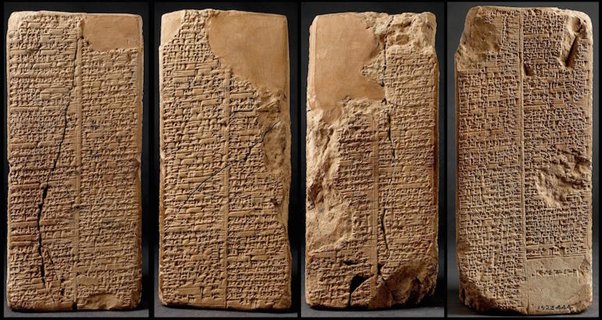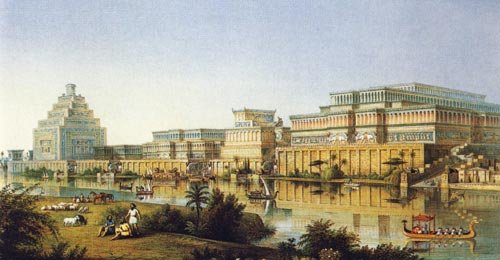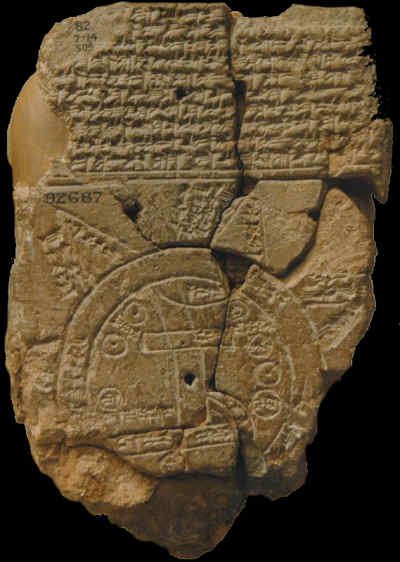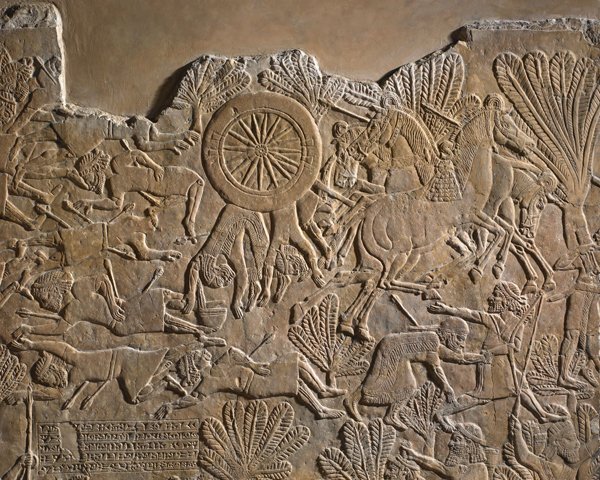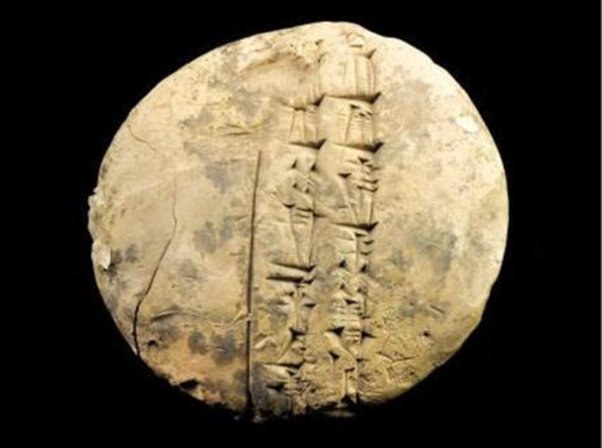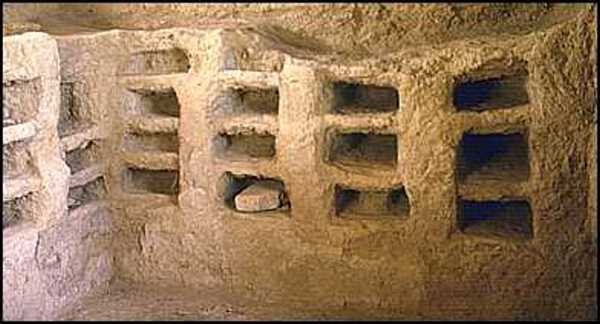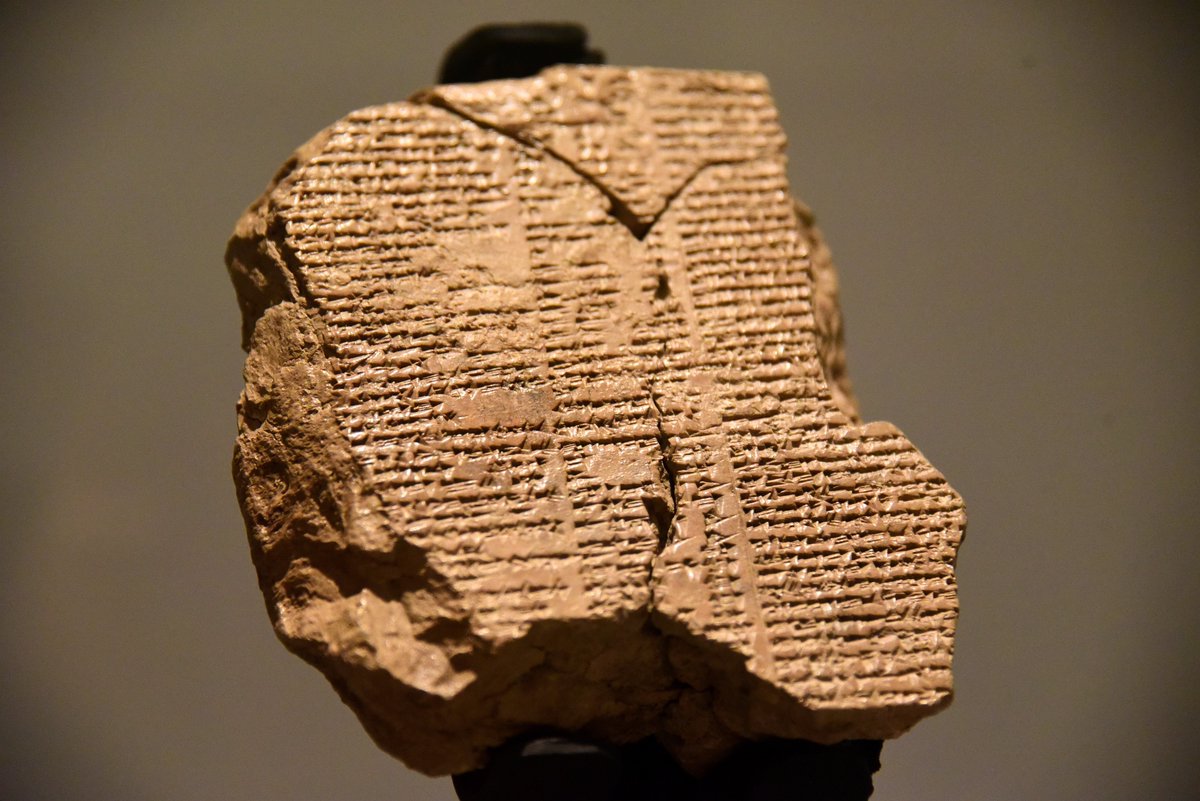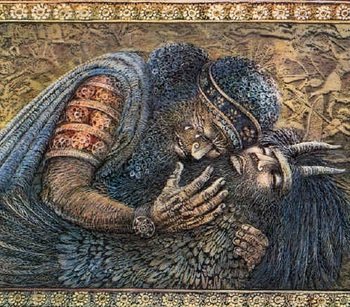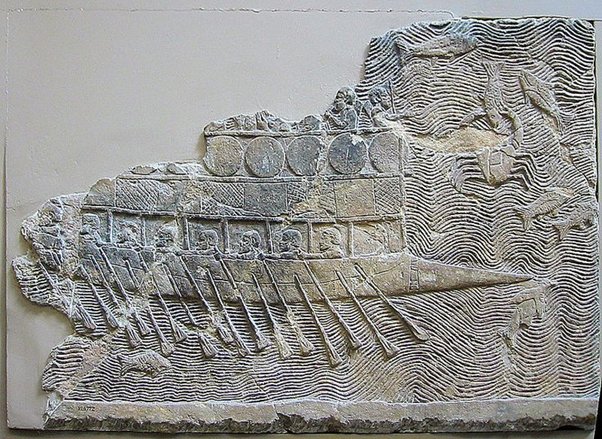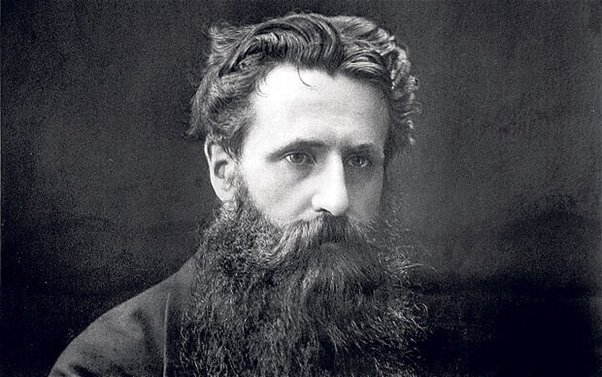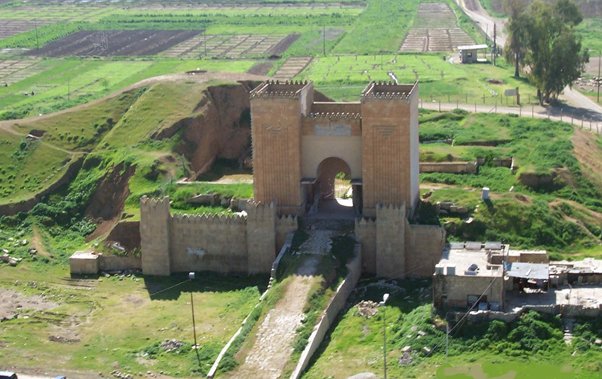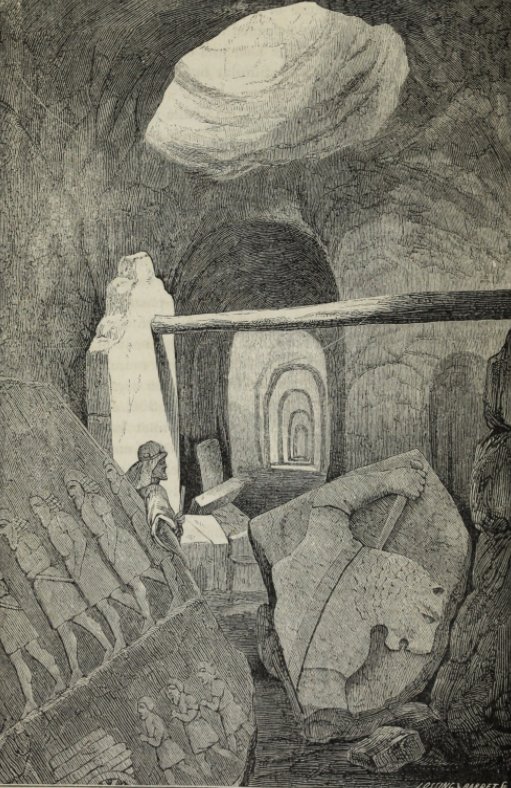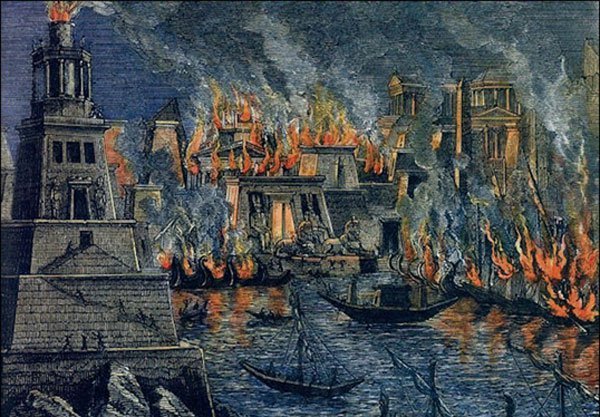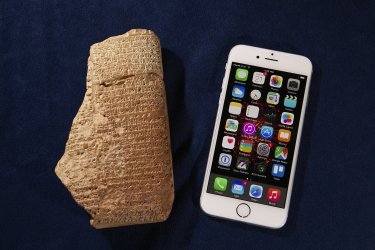A thread on the great library of King Ashurbanipal, discovered in the ruins of Nineveh: The first universal library, the source of our first story, and a lost wonder of the ancient world.
Ashurbanipal was the last great King of the Assyrian Empire, which covered the area of modern Iraq & Syria.
He ruled from 668-627 BCE, & oversaw the golden age of an empire spanning the known world.
He ruled from 668-627 BCE, & oversaw the golden age of an empire spanning the known world.
A younger brother, Ashurbanipal was never meant to be King.
From a young age, he was trained in priestly arts such as oil divination, liver reading, mathematics, & reading and writing.
From a young age, he was trained in priestly arts such as oil divination, liver reading, mathematics, & reading and writing.
But when his brother, the crown prince, died, Ashurbanipal was chosen as next in line for the throne. Because of this, he became the first Assyrian King to boast an ability to read.
Reading doesn’t seem to have been considered a very Kingly activity in the Assyrian Empire. It was confined to a priestly and scribal class.
Kings usually stuck to more kingly activities like riding a chariot & hunting lions.
Kings usually stuck to more kingly activities like riding a chariot & hunting lions.
Ashurbanipal seems to have been proud of his unique ability. In one inscription, he boasts,
“All the art of writing of every kind, I made myself the master of them all.”
He also boasts about reading ancient texts written "before the flood".
“All the art of writing of every kind, I made myself the master of them all.”
He also boasts about reading ancient texts written "before the flood".
It& #39;s impossible to know whether Ashurbanipal was as erudite & scholarly as he boasts. But what& #39;s interesting is that he clearly holds the written word in high regard.
This led to him gathering together all the tablets he could find, in all the languages of the world.
This led to him gathering together all the tablets he could find, in all the languages of the world.
By the time of his death c. 627 BCE, Ashurbanipal amassed a vast collection of over 30,000 tablets in his library, on an upper floor of his palace in Nineveh (modern day Mosul).
The library also included stone prisms, cylinder seals, waxed wooden writing boards & parchment.
The library also included stone prisms, cylinder seals, waxed wooden writing boards & parchment.
The majority of the tablets were administrative, incl. laws & letters, contracts & financial agreements.
However, a great deal of them also dealt with divinations, omens, incantations & hymns to various gods, as well as medicine, astronomy, & literature.
However, a great deal of them also dealt with divinations, omens, incantations & hymns to various gods, as well as medicine, astronomy, & literature.
Ashurbanipal demanded that his vassals send him new books.
One of his letters was found at Nineveh, written to the governor of Borsippa, asking for old texts, & specifying what he wanted: rituals, water control, spells to keep a person safe in battle, & how to purify villages.
One of his letters was found at Nineveh, written to the governor of Borsippa, asking for old texts, & specifying what he wanted: rituals, water control, spells to keep a person safe in battle, & how to purify villages.
Ashurbanipal wanted anything that was old and rare and not already in Assyria. He demanded the originals rather than copies.
He was also not beyond using war to fill his library’s shelves, & demanded them in tribute along with other treasures.
He was also not beyond using war to fill his library’s shelves, & demanded them in tribute along with other treasures.
The tablets were often organized according to the shape & contents of the texts. For example, 4-sided tablets contained information on finances, & round tablets contained information on agriculture.
The tablets would have been stored on shelves like these from another library found in the ruins of Sippar. Tablets of a certain type would be stored together in the same room.
Only a small amount of texts were works of literature. Among them were the creation story, the myth of Adapa the first man, & stories such as the Poor Man of Nippur.
The library also held The Epic of Gilgamesh, a masterpiece of ancient Babylonian poetry & the world’s first story
The library also held The Epic of Gilgamesh, a masterpiece of ancient Babylonian poetry & the world’s first story
Gilgamesh is the story of a Sumerian King who lived c. 2100 BCE. It tells the story of his battles with demons, the death of his friend Enkidu, & his quest to find the secret of eternal life.
The epic ends with Gilgamesh losing the secret to a snake & returning empty-handed.
The epic ends with Gilgamesh losing the secret to a snake & returning empty-handed.
Gilgamesh contains the first mention of a great flood rising up over the world, and a man building a vessel to preserve all the world’s animals.
It even includes mention of a bird being released and returning with an olive branch.
(the snake is quite biblical too!)
It even includes mention of a bird being released and returning with an olive branch.
(the snake is quite biblical too!)
Legend has it that on the evening in 1872 that Victorian Assyriologist George Smith came across the Gilgamesh fragment that mentioned the flood, he tore his clothes off and run through the British Museum.
The Library of Ashurbanipal was destroyed when the Assyrian empire collapsed & was overrun by its enemies.
The city of Nineveh was sacked so thoroughly that it was still an abandoned ruin when Xenophon marched past it 200 years later (which he writes about in his Anabasis).
The city of Nineveh was sacked so thoroughly that it was still an abandoned ruin when Xenophon marched past it 200 years later (which he writes about in his Anabasis).
The city was excavated by the Englishman Austen Henry Layard & Assyrian Hormuzd Rassam.
Their techniques were clumsy by modern standards, & they mixed tablets from different collections together, confusing the record.
Their techniques were clumsy by modern standards, & they mixed tablets from different collections together, confusing the record.
However, the Library of Ashurbanipal’s legacy as the world’s first universal library is secure.
Some legends even suggest that it inspired the creation of the great Library of Alexandria.
Some legends even suggest that it inspired the creation of the great Library of Alexandria.
Thanks for listening! As a bonus, here’s an image showing how the bulk of everyday cuneiform tablets had similar dimensions to smartphones.
The human hand hasn’t changed so much over the millennia…
The human hand hasn’t changed so much over the millennia…
If you’re interested in learning more about cuneiform text, here’s an earlier thread I did on the subject. https://twitter.com/PaulMMCooper/status/906220588741656584">https://twitter.com/PaulMMCoo...
Also if you want a little more of the ancient world in your TL, consider following Gilgamesh Bot https://twitter.com/GilgameshTweets/status/930683822445916161">https://twitter.com/Gilgamesh...
If you enjoyed this, you can find more of my research into Mesopotamian history in this thread-of-threads. https://twitter.com/PaulMMCooper/status/915957428545638400">https://twitter.com/PaulMMCoo...
And my upcoming novel, All Our Broken Idols, set during the time of King Ashurbanipal, is available for pre-order now: https://www.amazon.co.uk/dp/B0844M8RW5/ref=dp-kindle-redirect">https://www.amazon.co.uk/dp/B0844M...

 Read on Twitter
Read on Twitter